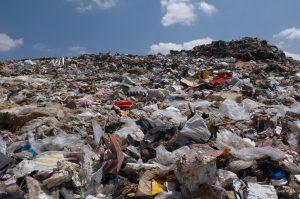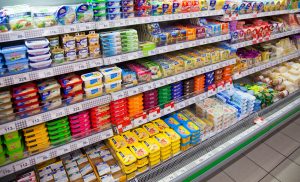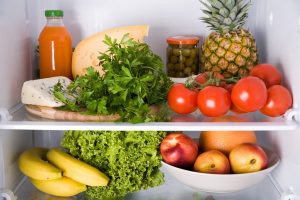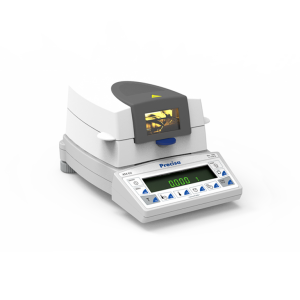Controlling the Moisture Content of Food in order to Reduce Food Waste
Bacteria is the main culprit of food waste, and it needs nutrients and moisture in order to grow and multiply. Therefore, controlling the moisture content of food is one of the most important means of extending the shelf life of food products. The shelf life is the time during which a product will remain safe, maintain desired sensory, chemical and physical properties, and comply with nutritional labelling. After this period the food must be thrown away as it will be unsafe for consumption.
When water activity is reduced, the rate of deterioration of the food can be minimised. This is because water is a requirement for growth and metabolism and supports many chemical reactions that occur in food products. Therefore, the minimisation of moisture content will reduce the growth of bacteria and will ensure the longer preservation of food. This is turn should reduce food waste as products will last longer without needing to be thrown away as frequently.
The controlling of moisture content in food can be done in both the production and packaging of food as well as its storage after purchase. The use of a moisture analyser is therefore essential throughout these processes in order to provide accurate measurements of moisture content so that we can reduce food waste.
The need to reduce food waste
In today’s deteriorating environmental state, the issue of food waste may just seem like another problem on the list. However, we need to urgently reduce food waste because studies have revealed that each year in the UK, 10 million tonnes are sent to landfill, which is over £17 billion pounds and equates to around a quarter of the total amount purchased.
Each year billions of pounds goes towards the growing, transporting and processing of this food that goes to waste. This food waste uses up approximately 20% of our water supply, 20% of our fertiliser, 20% of cropland and 20% of landfill volume. We need to reduce food waste because it is not only wasteful of money and resources but it also causes harm to our planet through the emission of methane during its decay. Methane is a greenhouse gas with 21 times the global warming potential of carbon dioxide.
Furthermore, the global food production and supply system is one of the largest contributors to climate change as it is responsible for one third of greenhouse gas emissions. The wasting of a quarter of our food means that much of this environmental harm is unnecessary and there was potential for it to have been reduced.
As a result of these shocking facts, it is clear that we must do everything that we can to reduce the concerning amount of food waste that we produce. This can be done through the control of the moisture content of food in production, packaging and storage of food products.
How can the moisture content in food be reduced in production and packaging?
Food processors often use a combination of controls to reduce the moisture content of food in the production and packaging of shelf-stable products in order to minimise the risk of bacterial contamination and to avoid the food’s taste or appearance being altered.
This can be done through heating, freeze drying, freeze concentration and osmotic concentration methods, which are effective because they can prevent the growth of vegetative microbial cells, germination of spores, and toxin production by molds and bacteria.
Water activity can also be reduced by using dehydration, crystallisation, and the avoidance of inadequate hygienic conditions during drying, transport and storage which could cause contamination by mould and form mycotoxins. In addition to this, the water activity and pH in foods can be directly controlled by the addition of chemical substances such as salt and the atmosphere can be adjusted using modified atmospheric packaging techniques.
In modified atmospheric packaging/storage, gas sensing can be used to create microenvironments for the food during its transportation and storage. Closely modifying the atmosphere can extend the shelf life of fresh products by providing the optimal gas combination to prevent spoilage, for example, decreasing the amount of oxygen and increasing the carbon dioxide can slow down bacterial growth.
How can the moisture content in food be controlled during storage?
Controlling the temperature and moisture content of food after its production is also highly important in the prevention of premature food spoilage which will reduce food waste.
The drying or freezing of foods can achieve bacterial growth inhibition by removing moisture from the food and therefore slowing down the enzyme activity. Modifying the atmospheric conditions during the storage of preserved foods through reducing the temperature to below freezing (storing the produce in a freezer) or reducing moisture from the atmosphere (storing the produce in a dry cupboard) can extend shelf life by up to three times by inhibiting chemical reactions that lead to degradation and spoilage.
Alternatively, during the storage of fresh foods in a refrigerator, additional moisture can contribute to food spoilage, such as from condensation in plastic containers and plastic storage bags. When moisture is present in a contained environment, spoilage bacteria can grow rapidly and form small colonies. These colonies cause fresh fruits and vegetables to quickly decay and become inedible. Therefore, consumers should monitor the moisture of fresh produce, especially in the refrigerator, to reduce bacterial growth and the consequent wasting of food.
The following methods will help to preserve stored food for longer and reduce food waste…
- Do not wash fresh produce before storing it as this will increase the moisture content of food.
- Reduce unnecessary moisture in your vegetables by storing the leafy greens with a paper towel in an airtight bag.
- Use a paper towel to wipe away visual dampness from produce initially after purchase and on a daily basis from then on to prevent moisture from collecting in storage.
- Keep air flowing in storage containers around food packages, keep them clean with hot soap and water and do not overly pack the containers with food.
- When purchasing food, make note of the ‘use by date’ and plan ahead, only purchasing the amount of fresh produce you are able to prepare and eat within three to five days in order to reduce food waste.
How can the moisture content in food be measured using a moisture analyser?
For the most accurate measurements of the moisture content of food, Precisa produces a wide variety of moisture analysers. Resulting from Swiss precision in production and engineering, our fully automatic analysers are compact and robust and provide error-free, high quality and efficient moisture analysis.
There are three steps in the moisture analysing process. The parameters for the process are first set using the automated key pad and the sample is placed in the drying chamber. Heat will remove all of the moisture from the sample, which will alter its weight. The gravimetric loss can then be calculated through the comparison of the final weight of the sample to its initial weight, which will in turn inform us of its moisture content.
Precisa’s moisture content analysers feature readabilities from 1mg (0.001g) to 0.1mg (0.0001g) and can reach temperatures of up to 230 degrees Celsius. Therefore, they are the perfect solution for moisture content analysis of food to reduce food waste.
Let us help you measure the moisture content in food to reduce food waste
If you would like to reduce food waste through the minimising of water content of food for longer preservation and would like to attain the most accurate measurements available, why not view our range of moisture analysers and do not hesitate to get in touch. We look forward to hearing from you.







